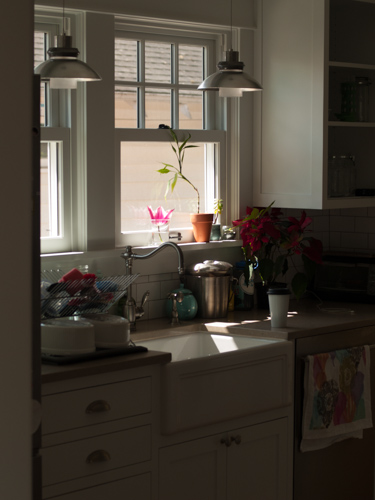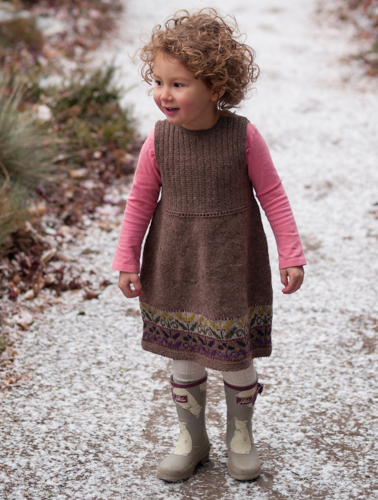Here’s what I never set out to be: domestic. Home Ec had been almost completely phased out in my public school; we had Wood Shop instead. My dad was a woodworker and I’d spent many happy hours in his shop, knocking together small projects like tool boxes to hold brushes, hoofpicks, and other equestrian necessities. I thought Wood Shop would be swell. It wasn’t. There was this premise that the class would operate as a student-run business, from product development to sales and marketing. We made camera-shaped picture frames for Father’s Day, against my arguments in favor of something useful, like birdhouses. Guess which half of the class was assigned to the technology side of the “company”? Guess who got to be in charge of ideas for decoration and marketing? Yeah. Even at twelve, I sniffed the sexism. So they also let a couple of us females use the Dremel tool to inscribe “You are a #1 dad!” on all the frames and then color in the letters with permanent markers. We were not encouraged in the direction of the band saw or the drill press. It’s possible I’m just still sore because my application to be VP of Engineering was rejected in favor of a less competent boy’s, but I swear that class deepened my resolve to wave a flag for equal rights and power tools for women. And like most adolescents I was living in a black-and-white world, so I thought it made my feminism stronger to reject the traditional female domains entirely.
One of the things I didn’t bother to learn was cookery. My parents put home-cooked food on the table every night, but they did it out of devotion to raising healthy children and not really for the joy of cooking. The dinner menu was balanced and tasty—apart from Roman Beans and Rice, which contained the twin evils of cooked carrots and cooked green pepper, and was thus palatable only with liberal applications of cheddar cheese—but it was only about five standard items deep, with an occasional excursion into a stupendous 1950’s casserole book for cheese soufflé or beef stroganoff. And I didn’t attend very closely to what went on in the kitchen, apart from helping to chop carrots for the salad and admiring my father’s precision in judging the exact moment when the pancakes were ready to flip. Still seeking vengeance for seventh-grade Wood Shop, I took summer jobs working construction instead of waitressing, so I didn’t stray into the orbit of any of the fancier restaurants in our little town. (Meanwhile, my brother learned to bake a mean loaf of bread in a local café.) It wasn’t until my vegan period in college that I got interested in preparing food; when I was home for summer vacations and demanding special treatment at meal times, it seemed only fair to pitch in with new recipes and to learn to cook them myself. And it turned out to be thoroughly enjoyable. I got confident and even creative.
When my future husband and I struck up together and moved to New York City, we regularly cooked together. (This seemed to be a rarity in Manhattan; takeout is ubiquitous and, at the time, well-stocked grocery stores were usually several subway lines away. Most young people we knew seemed to be using their ovens for shoe storage.) After we married and moved to Portland, we joined a CSA. My husband was soon too busy with his start-up to spend time cooking and would have been happy to subsist on cereal and yogurt, but I had standards, and keeping up with boxes of farm produce encouraged me to experiment in the kitchen. The first solid food our baby daughter swallowed was a roasted brussels sprout from the farm. She was thrilled to eat whatever we ate, and happy enough to sit on the kitchen floor stacking and unstacking plastic containers or building towers of vitamin bottles, so the cookery fizzed on for awhile.
I think it was the second child that did in my enjoyment of the kitchen. With two kids and three jobs between us, there isn’t often time for anything more elaborate than pasta with fresh greens, veggie sausage, and parmigiano. (Good cheese is always the saving grace.) I find I’ve sunk into preparing the same handful of one-dish meals. Some days I seem to be mother birding it, spending every moment fetching more food for one hungry mouth or the other, so I don’t even want to look at another comestible when dinner rolls around. We supplement with the same two takeout orders at the same two restaurants. We go to the child-friendly brew pub just up the street where we toggle between the same two options, time after time. Boring! I’m bored! I want food to be fun again!
Part of my aim for our kitchen remodel was to create a space I’d want to be in. I talked about it at a practical level—about opening up the space so we wouldn’t all pile on top of each other around the kitchen island during breakfast/lunch prep or trip over the dog as we clambered across the open dishwasher door. But what I was privately hoping was to rekindle my enthusiasm for cooking. It’s working, I think. Slowly, but perceptibly. I’m using our embarrassingly deluxe oven to bake bread every week. This afternoon the spark was strong enough that when I got the daily “What should we do for dinner?” text from my husband (one of us always sends it, and it’s probably our most passive-aggressive communication because what it actually means is “I hope you’ve got this, because I don’t want to be in charge”), I wrote back that I thought I could conjure a carrot soup. I knew we had too many carrots in the fridge and a loaf of sourdough in the freezer and I figured I could invent the rest with whatever was lying around.
Whenever I’m in this mode, I reach for Deborah Madison’s Vegetarian Cooking for Everyone. That book is my kitchen bible. I can start with a vague idea like carrot soup, look up the main ingredient, and see how Deborah would bring it off. Then I make substitutions as necessary. In this case she plumped for a red bell pepper. I had orange and yellow slices totaling about half a pepper. (Full disclosure: I filched most of them right out of the kids’ unfinished lunch bags. I believe I actually shouted to Ada, who was snacking on her remnants, “Don’t eat that pepper! I need it for the soup! You can have the radishes.”) Deborah said flat-leaf parsley and dill. I didn’t have either, but I did find a healthy rogue cilantro in the winter container garden and I plucked a few precious leaves from our baby sorrel plants in the new kitchen garden. Ada reckoned maybe ginger would be a good addition, and I reckoned she was a pre-K wizard genius. Verdict? Best soup I’ve made in ages. Dancing, sparkling, sumer-is-icumen-in flavors.
Spring Carrot Soup
8 large carrots, thinly sliced
1 large yellow onion, diced
1/2 (use a whole one if you’ve got it) orange or yellow bell pepper, cut in 1″ chunks
2 Tbsps white rice
1 tsp salt
Sauté these in 2 Tbsps butter, then cover and cook on medium heat for 10 minutes, until onion is soft. Then add:
a few grinds of freshly milled pepper
2 tsps sorrel, chopped
2 tsps cilantro, chopped
1 tsp fresh ginger, minced
zest and juice of a large orange
4 c vegetable stock
2 c water
Bring the soup to a boil, then turn the heat down low and simmer about 25 minutes, until the rice is cooked. Cool for a few minutes and then purée with an immersion blender (or, as we call it in my house, a soup squizzer). Garnish with a dollop of yogurt if you like.
We added a side of roasted asparagus and the homemade sourdough. Delicious. And even if I serve pesto pasta three times later this week, it feels like the mojo is back.








Lol! I hear you girl. I’m the dinner person and E is not good at planning. He does grill in the summer though. We have carrots overrunning the fridge. I think I’ll try this recipe!! Xoxo
Some famous chef said there are two kinds of people- those that wake up thinking about what’s for dinner, and those that don’t. Although I’m the former I did’t learn to cook until I met my husband. I love the Deborah Madison book, although I’ll confess we often add bacon to her dishes…
Yum! I love carrot soup. Your new kitchen sounds lovely!
I love to cook, but working full-time and having a toddler makes dinnertime a challenge, esp. since my husband doesn’t get home from work (terrible commute) until nearly toddler bedtime. I’ve found that making big batches of chili, stew, soup, crockpot meals, etc. on the weekend really helps, but those aren’t such great summertime foods.
Zucchini/bean burritos are a favorite quick meal around here — cut 6″ zucchini in half, steam them, then add to a tortilla with veg refried beans, green chiles, and cheese. Roll up, pop in a baking dish, top with salsa and cheese, broil until the cheese melts. Yum!